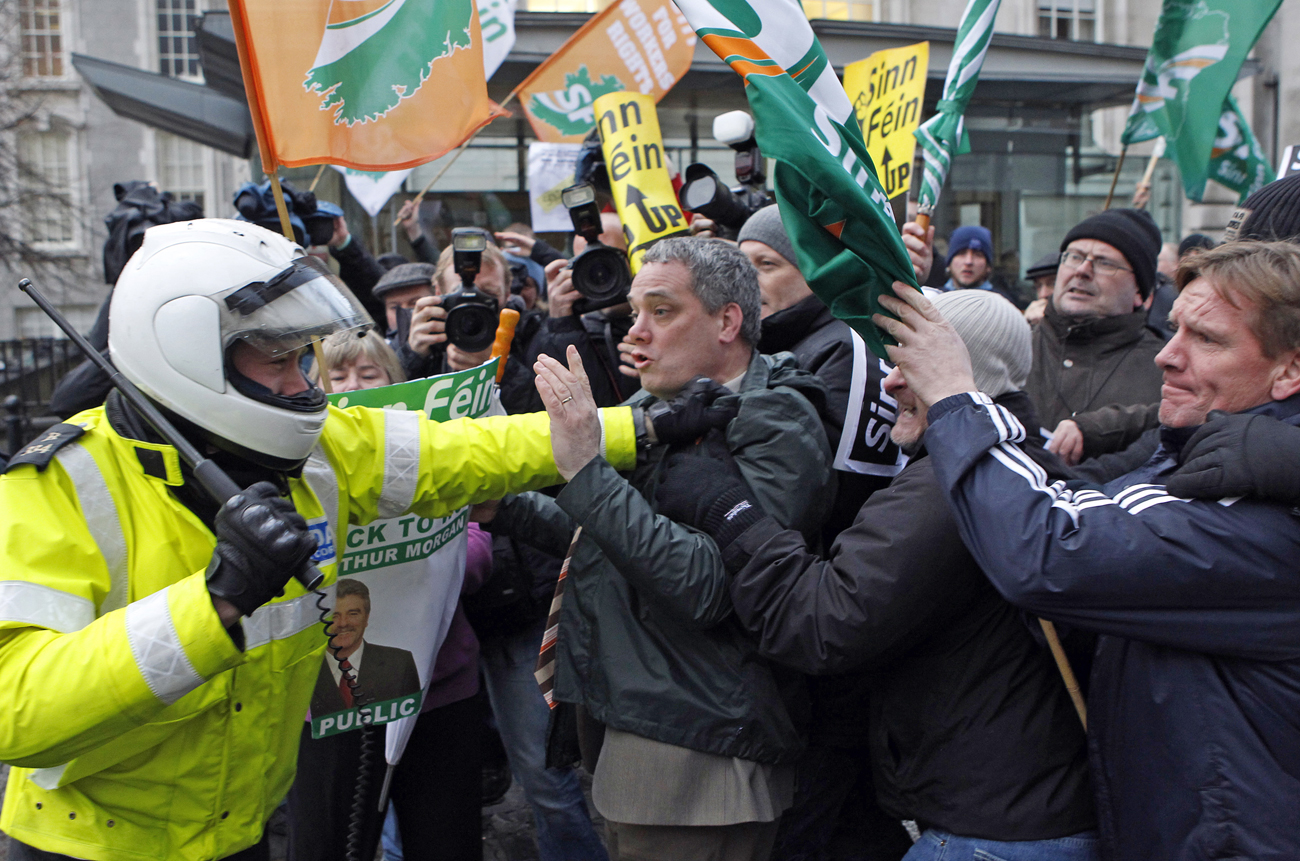“Once upon a time and a very good time it was there was a moocow coming down along the road and this moocow that was coming down along the road met a nicens little boy named baby tuckoo….”
James Joyce, “Portrait of the Artist as a Young Man”
Well, the Irish have gone down that rocky road a way now, and it wasn’t such a very good time after all when that nicens little country met up with a financial steamroller instead of Joyce’s bountiful moocow. And the further result of their financial disaster has been a political one as well. Even after the current coalition government signed off on a $100 billion international bailout, Irish prime minister Brian Cowen confirmed he would dissolve the government after the country’s parliament passed the 2011 budget at the beginning of December. This followed an effort by protestors to storm the parliament building in Dublin - and after Moody’s Investors Service, the financial ratings agency, lowered their rating of Irish sovereign debt by several notches. Ouch!
Way back in the middle of this decade – and right now it seems like an aeon ago - Ireland was the go-go nation of Europe. Dubbed the Celtic Tiger, Ireland was the go-to country for investment funds, IT start-ups, foreign high-tech investors, and a housing building boom and price bubble that made virtually everyone else in the world jealous. But that’s all gone now, and maybe for a long time. Many of those new “McMansions” built in Ireland’s picturesque villages or in the shadows of those historic, scenic now-ruined castles are about to go up for distress sale prices – or worse. It's Florida on the Irish Sea.
As the wolves circle, European, and most especially EU and the eurozone leaders are working hard to sort out the dirty details for a massive bailout package from the European Union and the International Monetary Fund to help salvage Ireland’s economy. Ireland’s crisis is probably more like the American sub-prime crisis than it is Greece’s recent pain, but Ireland’s agonies are rocking European and the euro’s stability nonetheless.
Supporters argue that this bailout should allow Ireland to shore up its wavering banks and crucially continue to operate without having to borrow money at budget-breaking rates. The decision received endorsements from the country’s neighbours, but international financial markets have been a bit more cautious. Investors will now get to watch the political repercussions and the inevitable angry public backlash as well.

Photo: Irish Taoiseach Brian Cowen(L) reacts as the Minister for Finance Brian Lenihan speaks to the media in Government Buildings Dublin November 21, 2010. Ireland requested an international bailout on Sunday to tackle its banking and budget crisis, the euro zone's second bailout this year as Brussels moves to protect Europe's wider financial stability. REUTERS/Cathal McNaughton
Ireland’s government does not see itself as having acted irresponsibly (as did Greece) in running up government deficits, almost without paying much attention to it, and the Irish have been preparing a four-year budget plan replete with sharp cutbacks to reduce its deficit down from 32% to 3% of GDP. But regardless, the government has been sinking further into debt, ever since it decided two years ago to protect its banks from all losses. In the intervening period, its banking system has now been weakened so much it finally decided there was nowhere else to go.
Banks, having stoked the real estate boom, now have losses of around €70 billion, or almost half the country’s economic output. As a result, as part of the bailout and budget process, new bank stress tests will be imposed and there will be a great shrinkage of local banks as the bailout will target, first of all, the recapitalisation and consolidation of its tottering banking structure. But beyond the impact on the banking sector itself, the shockwave will be a huge knock on Irish confidence. After years of Celtic Tiger growth, it is going to take a while for any resurgence.
For weeks, the Irish government denied it was going to need a rescue package, but following an emergency meeting on Sunday night, Brian Cowen, the country's Taoiseach (prime minister), confirmed his nation had asked for help. The details are still being refined, but the total package is probably going to be about $100 billion – a huge whack for a country of about 4 million people. This newest bailout will come from the $1 trillion rescue mechanism the European Union and the International Monetary Fund established in May to help eurozone countries that start to drill down towards national defaults.
International officials hope this commitment will calm any investor stampede and, simultaneously, keep the contagion from spreading to the rest of the PIIGS – Portugal, Italy, Ireland, Greece, Spain. In fact, this fear of spreading market panic was a key element in pushing international economic officials to urge Ireland to take the money before things really fell apart.
Cowen said there would be two funds, one to back up the banks and another to allow Ireland to continue government operations without being forced to turn to the commercial bond markets, something Dublin has already said it cannot afford. The proponents of the package say it will allow the country to carry on without funds from the bond markets for up to three years.
Ireland is now up to its eyeballs in debt because the government has had to bail out the country's main banks, an effort that has cost it $60 billion and driven the country’s 2010 deficit to 32% of GDP. Even as the bailout takes shape, international ratings agencies are mulling over downgrades – or actually issuing them – for Ireland.
Watch: Irish PM talks about crisis. (ITN)
type="application/x-shockwave-flash">




